
All categories
Featured selections
Trade Assurance
Buyer Central
Help Center
Get the app
Become a supplier

(793 products available)








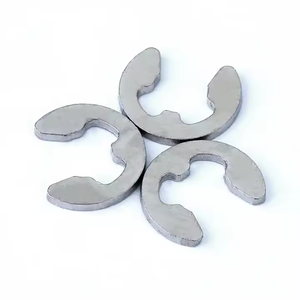








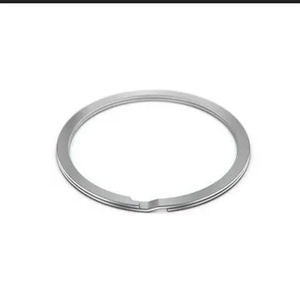


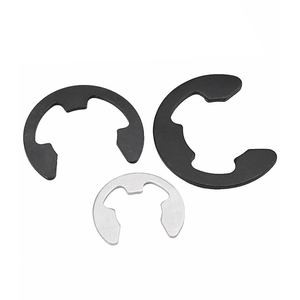
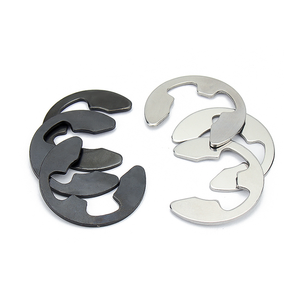

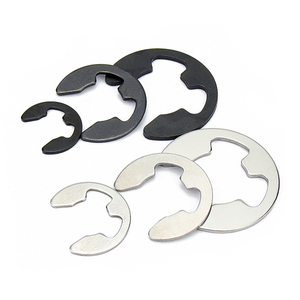



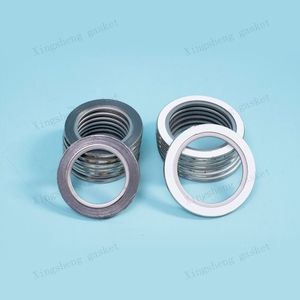



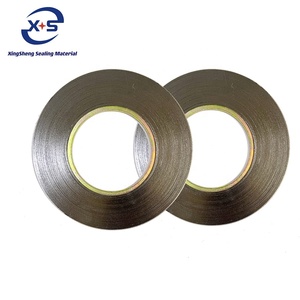






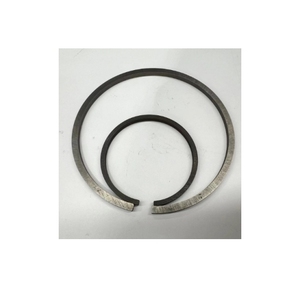






There are some ways to group spiral retaining rings based on how they hold a part or how the ring is made.
Internal spiral retaining rings
Suppliers make internal spiral retaining rings to fit inside a groove they cut into a part. The ring pushes against the part's walls to hold the part in place. This design applies the ring's tension outward against the groove walls, helping hold the component securely in place. They work well in rotating elements since they exert force on both sides of the groove walls. The internal shape of the ring allows it to fit precisely within the groove of a shaft or bore, securely seating itself to prevent axial movement.
External spiral retaining rings
Suppliers make external spiral retaining rings to fit into a groove on the outside of a part. The ring pulls against the groove to hold the part in place. This design pushes with its ends against the same side of the ring to secure it tightly against the groove walls. They suit use cases requiring substantial load support. The external shape of the ring permits it to fit snugly around the outside edge of a machined component, such as a shaft, axle, pin, or other cylindrical parts.
Sectional spiral retaining rings
Manufacturers make these rings with different cross-sectional widths and heights. They create these rings for specific load-bearing or application requirements. The ring's section shape and size influence the loads it can carry and how well it fits in different groove sizes. The thicker or wider the ring is, the more force it can handle before yielding or breaking. These rings have larger cross-sectional dimensions for heavy-duty applications requiring greater retention strength.
Single-turn spiral retaining rings
These simple rings consist of one spiral coil turn. Manufacturers design single-turn rings for light retention duties. This design is ideal for use cases requiring low to moderate axial loads. These rings are widely used in general machinery and automotive applications requiring basic part location and guidance.
Multi-turn spiral retaining rings
Multi-turn rings contain more than one spiral turn. They provide stronger retention than single-turn rings. These rings work well in heavy-duty situations where strong axial loads are present. Multi-turn rings wrap more around the groove, distributing forces better and holding parts more securely.
The materials used to make spiral retaining rings have durability properties that depend on the application's specific demands. These materials need to handle wear, loads, and environmental conditions.
Stainless steel
This material provides the highest overall durability due to its resistance to rust, corrosion, and wear. It retains strength over a wide temperature range. This ring material is ideal for mission-critical applications in the aerospace and automotive industries. Those industries may need to resist chemicals, moisture, or extreme heat.
Carbon steel
Carbon steel offers high strength and wear resistance. These properties make it a widely used material for retaining rings. Users must apply a protective coating to prevent corrosion. They usually use this material in applications with no direct exposure to moisture or corrosive chemicals. Those applications include agricultural or industrial machinery.
Spring steel
Manufacturers make retaining rings from spring steel for heavy-duty applications. Those applications require high strength and elasticity. The combination of hardness and flexibility allows the rings to withstand repeated loads without permanent deformation. This ability grants the rings a long working life. These rings commonly serve in high-stress mechanical systems, including equipment suspension or load-carrying structures.
Alloy steel
They mostly use alloy steel for high-strength retaining rings in demanding industrial applications. The added alloys provide superior resistance to wear and fatigue. They also enhance the strength of the material. The enhanced strength allows the rings to maintain dimensional stability under heavy loads. Users find these rings commonly used in construction, mining, and heavy machinery applications.
Brittle iron
The rings come with a unique combination of strength, hardness, and good wear resistance. It makes them suitable for heavy-duty applications requiring stable performance. Cast iron retains its toughness even at extreme temperatures. This factor makes it ideal for high-thermal industrial applications. Users choose rings made of this metal for kilns, furnaces, and heavy machinery where long wear life is essential.
Spiral retaining rings are widely used due to their versatility and reliability. The rings are especially popular in various demanding commercial applications. Some widely used applications include the following.
Aerospace
Manufacturers use the rings to secure critical components like gears, shafts, and pulleys. The aerospace rings offer weight reduction without compromising strength. They also enhance the assembly's reliability and safety. They also reduce the number of parts required. This reduction leads to simpler assemblies for easier maintenance.
Automotive
The spiral retaining rings help keep axles, brake systems, and transmission components in place, ensuring these parts function smoothly and last longer. The rings improve fuel efficiency by reducing weight. They also enhance the durability and performance of the retention system. The improved performance leads to more reliable vehicles that require less maintenance.
Industrial machinery
Users use the rings to keep shafts, gears, and bearings in industrial machines in place. The rings distribute loads evenly across the retained parts. Doing this improves overall system stability and efficiency. They also reduce wear and tear on components, leading to lower maintenance costs.
Construction equipment
The spiral retaining rings hold hydraulic cylinders, drive shafts, and other vital parts of construction equipment like excavators and bulldozers. The rings increase strength and load capacity, allowing for heavier-duty applications. They improve safety by keeping critical parts securely fastened. That factor reduces the risk of unexpected equipment failures during demanding tasks.
Mining and heavy machinery
The rings secure components in the extreme operating conditions typical of mining applications. The typical mining applications include draglines and trucks. The spiral retaining rings are made from tougher materials than conventional retaining rings. This toughness ensures they withstand the massive forces and harsh environments of mining. Their durability reduces the need for frequent replacements.
Users select spiral retaining rings based on various factors to ensure the rings perform as expected. The rings should meet the functional, compatibility, and durability requirements for the intended use case.
Load capacity
How much axial load the ring can hold is one of the most important factors to consider. High-load scenarios need multi-turn or thicker rings to retain structure and resist deformation under pressure. In contrast, lighter loads are ideal for single-turn and thinner rings. Choosing the right one for the load ensures the retaining ring maintains parts in position effectively without failure.
Material
The accumulation of environmental factors and the application determine the ring material to use. For example, users in marine and chemical environments prefer stainless steel due to its corrosion resistance. For high-heat or wear situations, users select carbon or spring steel to withstand thermal stress and abrasion. No direct exposure to corrosion usually allows for cheaper retaining ring material options.
Groove specifications
The ring must fit perfectly in the groove of the mating part. The suppliers make spiral retaining rings in varying radial and axial dimensions. They ensure the rings can accommodate standard machined groove sizes. A proper fit not only maximizes retention but also prevents excessive wear caused by ring-to-groove movement.
Application type
Manufacturers make some retaining rings to handle dynamic loads, such as rotating shafts in motors and gears. Those applications require rings with greater flexibility, such as internal spiral rings. Conversely, static applications include bearing housings and structural components. These components are suitable for more rigidly constructed external rings since the wear is lower.
Installation and removal
Ease of use during assembly should also drive the decision. Certain ring designs allow for simplified installation, such as rings with tapered edges or special gripping points. These laterally installed rings ensure precise seating in the groove while minimizing the risk of accidental bending. Access is important for easy removal during maintenance without causing damage to either the ring or the surrounding components.
A. Spiral retaining rings provide better flexibility and hold than solid or snap rings. Their spiral form enables use in dynamic and static applications because of their load distribution. The rings also have smaller installed sizes. It allows them to be employed in applications requiring compact designs.
A. The internal spiral retaining rings have a lower tendency to uncurl during rotation. The reason is that the ring's design stabilizes it under dynamic loads. This factor ensures retention is consistent during operation, preventing failure or component movement.
A. The more the turns, the higher the load capacity, distributing the retention force better across a larger surface area. Because of this advantageous factor, they can handle much more axial load and provide a stronger and more secure retention than a single-turn ring would.
A. Reusing them is not often recommended. However, in cases where the ring has not been subjected to extreme loads or harsh environments, users can reuse the ring. However, they should assess the ring for wear or deformation before reusing it.
A. The groove must match the ring's size to ensure a secure fit. A correctly sized groove prevents excessive movement, which would wear out the ring. It also prevents the ring from failing due to improper installation.